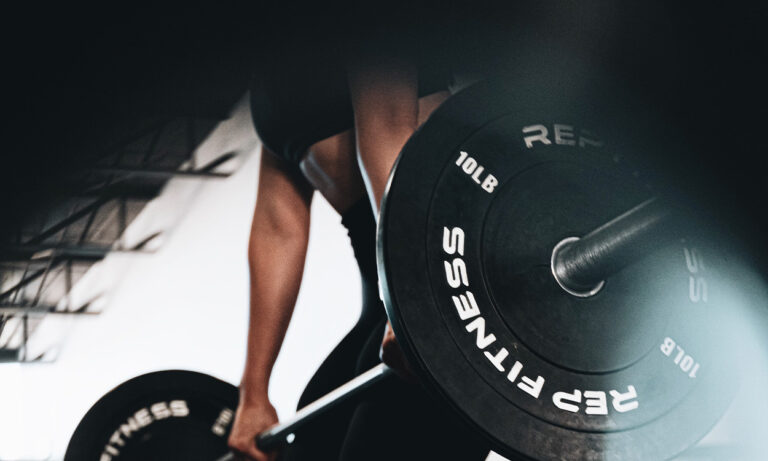Why is #gymcreep trending on TikTok? Unpacking the newest trend empowering women at the gym
The gym can be an extremely daunting place. Every turn you take you’re confronted with either ultra-macho men hogging the squat rack, or toned beautiful women who leave you quivering with envy. Now, imagine finally plucking up the courage to start, but before you’ve even had a chance, you feel a pair of eyes lasered into you. What follows is almost always an uncomfortable exchange that leaves you feeling rattled and frustrated.
Moving forward you choose your workout times carefully and favour a pair of long leggings over shorts. These creepy encounters have been occurring for decades, but thankfully today we have the technology to capture them.
Catching these scenarios has become commonplace on TikTok. Primarily sitting under the tag #weirdguysatthegym—which has already amassed over 18.8 million views—numerous users have posted videos covertly documenting their experience. Setting up their phones in a discreet place, they’ve managed to record the moments in which men begin to harass or bother them.
While this doesn’t happen exclusively to women, it’s important to recognise that they are the primary victims of unwanted attention.
@paytonflynn_ before you come at me, he knew I was recording and has made multiple highly inappropriate comments to me. #fitnesscontentcreator #gymcontentcreator #gymsafety #gymtok #gymvlog #girlswholift #gymcreeps
♬ Creepy and simple horror background music(1070744) - howlingindicator
One such example is TikTok creator Gina Love. In a video that currently has almost 700,000 views, Love is filming herself while she does a leg workout. The caption reads “watch this creep come over to my personal bubble.”
In the clip, the man stands directly behind Love as she lifts dumbbells before deciding to leave. According to Love, the gym was practically empty but the stranger still chose to take a spot directly behind her.
Speaking with The Guardian, the creator explained: “I would say I experience creeps 15 per cent of the times I work out. It’s almost like they’re trying to undress you in their heads.”
Love continued, “It makes me feel disgusted, anxious, and my survival instinct kicks in. I’ll typically cut my workout short because I can’t get back into feeling comfortable with that person around me.”
@ginaveelay Be careful out here girlies cause wtf #creep #weirdo #gymcreep #k18results #gymweirdshit #awareness #awarenessvideo #creepyguys #fyp #viral #fyp #gymprobblems #gymissues #inconsiderate #inconsideratepeople #selfawareness #selfaware #danger #creepy #creepyguystaring #creepyguystory #creepyguywithacamera #workingout #fitness
♬ original sound - Gina
It’s also incredibly crucial to remember that unwanted attention can also come in the form of unnecessary and unwarranted staring. Being on the receiving end of some heavy staring can be an incredibly uncomfortable experience—and it’s often something we as women are told to simply “get over,” or “take as a compliment.”
@fit_with_heidi Don’t sit there and tell me you’re not doing something when I have proof. 😡 #gymtok #fittok #influencer #viral #trending #tiktok #fitness #gym #gymgirl #fyp #fypシ #foryou #foryoupage #gymcreeps
♬ Real As It Gets - Lil Baby
A study in 2021 by My Protein showed that 76 per cent of women felt uncomfortable exercising in public. Moreover, 63 per cent of women stated that they change their behaviour depending on who is in the gym around them.
@songetac It’s actually annoying, the last time I tried to expose this guy tiktok took it down #gym #cantstretchinpeace #creepy #fyp #lafitness
♬ Somebody's Watching Me - Rockwell
Often, women who speak out about this form of harassment are told that they’re overreacting, and some critics even say that they’re acting out of line by deceiving the men and hiding their cameras. Did I hear someone say victim blaming?
Some of the comments under Love’s video for example indicate this kind of mentality. One user wrote: “you don’t own the corner,” while another put “bruh some girls are delusional.” There were also, of course, a slew of presumably male users who deemed it appropriate to comment statements such as “nothing to look at anyway” and “what is there to stare at?”
The problem with this kind of nonchalance in regard to unwanted attention at the gym, is that it normalises viewing women as physical and sexual objects—a misogynistic ideology that doesn’t seem to be disappearing from society.
It also further perpetuates the idea that these forms of harassment are illegitimate and should not be taken seriously. The more we talk about these encounters, the greater empowerment we give women to expose them.
Women exercising should not be some kind of spectacle or show. They shouldn’t have to adjust their wardrobe choices out of fear or anxiety and they definitely shouldn’t have to wield an iPhone in order to work out safely and comfortably.






